One of the very first kit car replicas I saw in person was of an F40.
There are some really good F40 replicas out there. Ferrobi here on the forum had a REALLY nice F40 that he sold recently. It is a non-stretch model so it can use the stock Fiero space frame, but does come up short to the real thing length-wise. It was very well put together and had some really good replica items and feel to it.
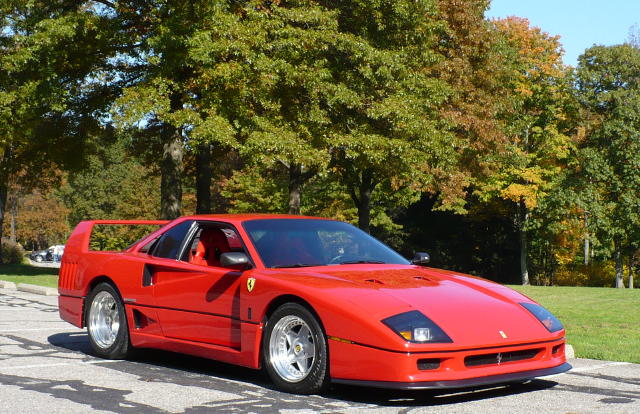
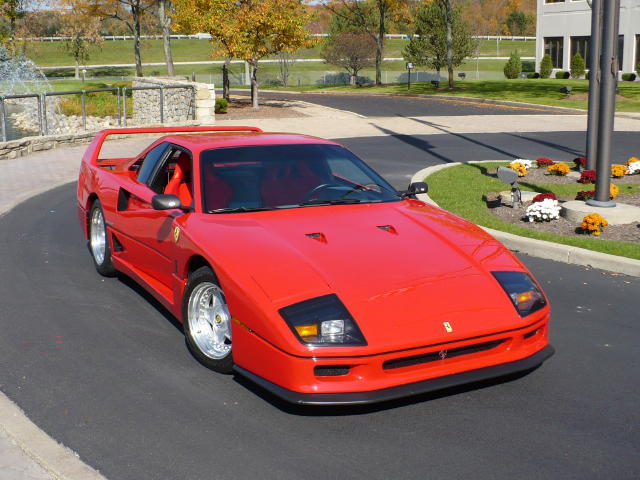
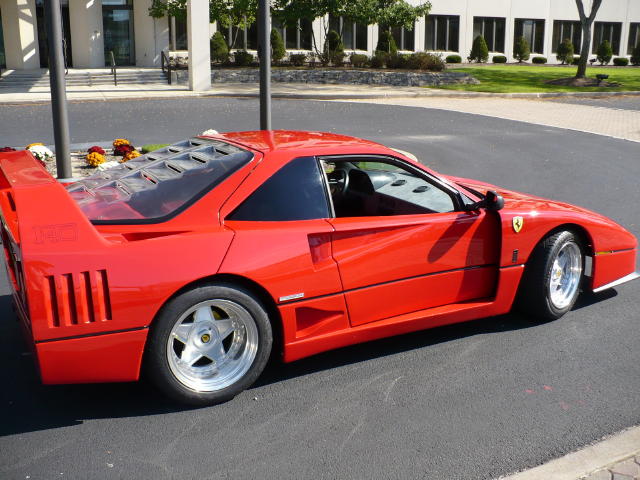
He even had the master of repli-car interiors Amida do a very good F40 dash replica (this is by no means cheap).
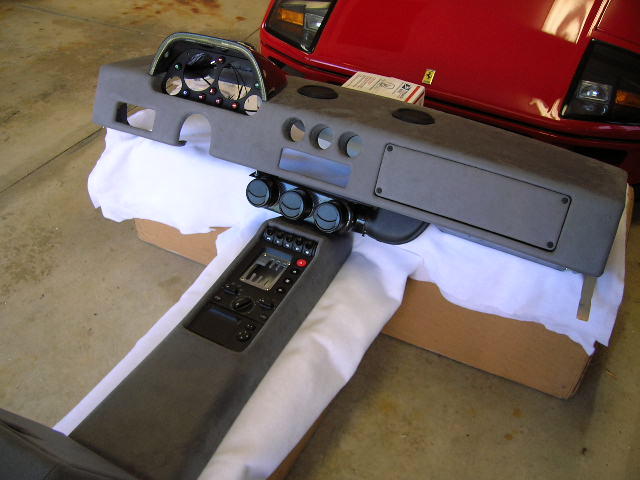
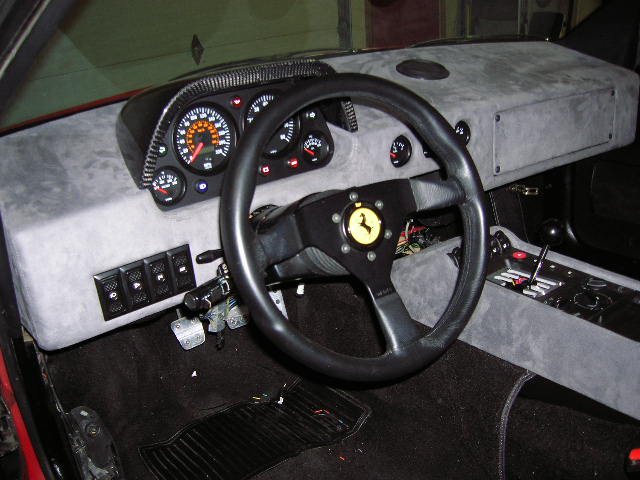
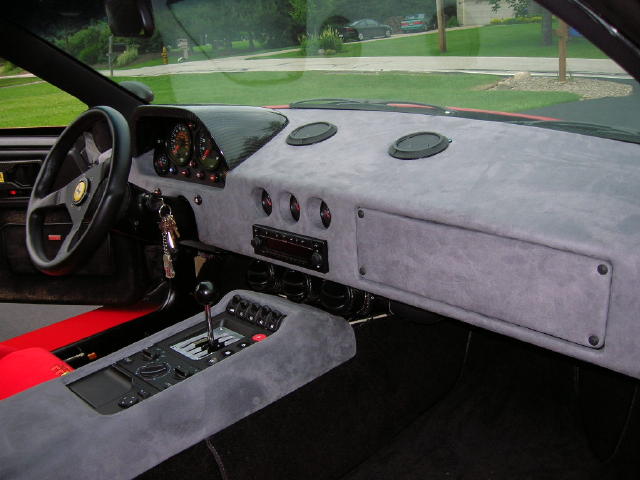
The car was very well put together.
However... the very real and terrible thing about every single F40 replica ever made, and I don't mean non-stretch models... is this, also from Ferrobi's car;
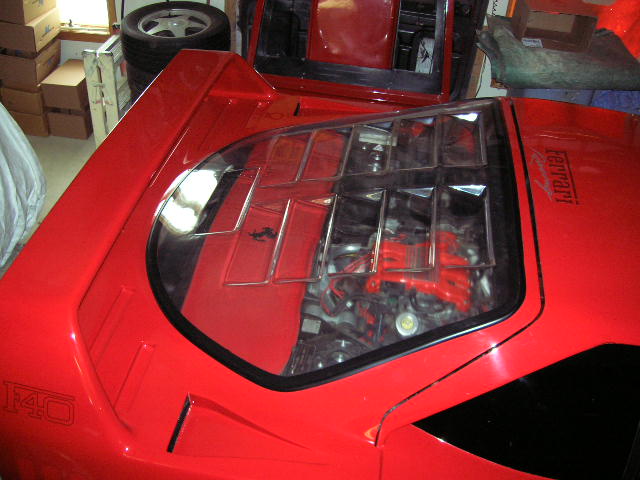
No I'm not talking about the stock V6. I'm talking about the very integral iconic F40 rear window. Most people believe that the window was designed this way for looks (and to a large degree it was as it showed off the very fancy Ferrari engine). But the other two very real reasons why it was designed the way it was is both for cooling the engine and for aerodynamics. Never mind the fact too that the engine in the Fiero is pointed 90 degrees the other way compared to the real Ferrari.
Thus the whole idea of using a Fiero for this type replica thus just kind of falls onto it's face. On a Fiero the window doesn't have to be there necessarily for cooling, and it definitely doesn't have to be there for aerodynamics because you would be a fool to drive over triple digits in a kit car that has likely had structural compromise to fit the kit. So ultimately on a Fiero it is there for looks. However - and especially on non-stretch kits - the engines in the Fiero and most Fiero engine swaps are transverse mounted, not longitudinally mounted like the Ferrari F40.
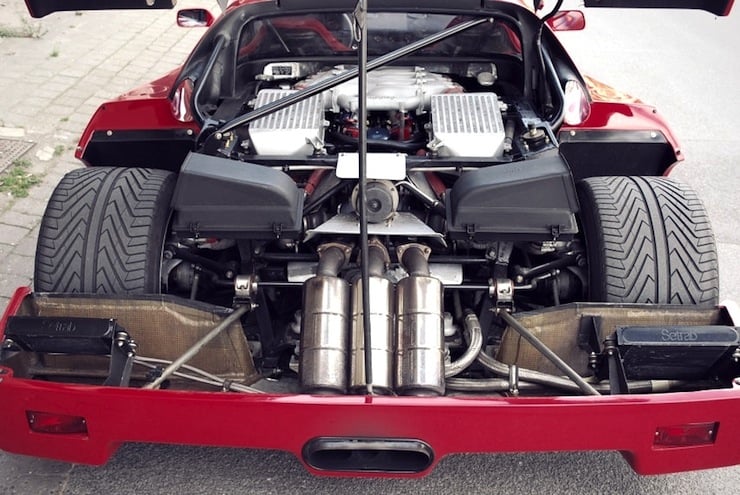
For me then, with this very real limitation it's really near impossible for you to satisfy your contradictory statements. You won't be able to do this cheap, because you will ultimately have to get around these limitations. Obviously there are ways to get around issues of transverse mounting. The biggest of which would be to lengthen the rear of the frame to both accommodate a stretched kit and to facilitate a longitudinally mounted drivetrain swap. But if you do perform these modifications you'll be spending a good deal of money. However you have to perform these modifications to satisfy your means by improving on the basic Fiero geometry. And if you don't, even if you go with a fast transverse engine swap, you still be hampered by basic Fiero geometry which will limit the overall integrity of the build.
I mean ultimately if this doesn't bother you then by all means go ahead. And despite myself really liking kit cars and enjoying the kit car hobby, this is what has always killed F40 replicas for me personally. The beautiful thing about most Lamborghini and other Ferrari replicas (even the more modern ones like the F360) is you can get by with skimping on engine compartment details because the engines will be covered up. Even in kit car replicas that have some sort of glass cover (again, like the F360) you can smoke or tint the window over the decklid and no one would know different. You really cannot do this in any form with the F40, and thus you are ultimately subjected to the mercy of that very large rear window.
The Ferrari F40 is one of the most difficult kits to get "right," and I would surmise that the people that have done them "right" did not use Fieros and likely went with scratch build chassis.
[This message has been edited by Fiero84Freak (edited 01-31-2014).]



























 I already have half the Ferrari interior.
I already have half the Ferrari interior.